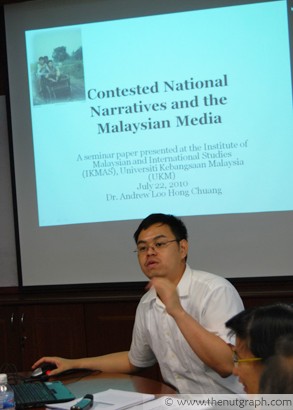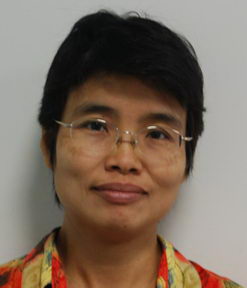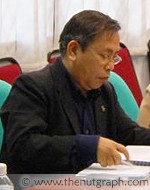
BANGI, 28 July 2010: The idealised images of Malaysian unity portrayed in Petronas‘s Merdeka ads is constructed, rather than a reflection of reality, a media and communications researcher said.
Andrew Loo, who completed his PhD at the University of Melbourne on nationalism and ethnicity in the Malaysian media, said these ads always portrayed characters of different ethnicities as having equal and horizontal relationships.
“They reveal the desire to construct a Malaysia in which all its citizens are considered equal and ethnic differences are bridged by friendships,” said Loo, who analysed Petronas’s Merdeka ads from 1997 to 2007 for his PhD research.
He noted that while ethnic differences were acknowledged in these ads, many of which were directed by the late Yasmin Ahmad, these differences were not emphasised.
“By depicting Malay, Chinese and Indian [Malaysians] as friends, the Merdeka ads employ the metaphor of friendship in their stories to represent our multiethnic nation,” Loo said when presenting his research at Universiti Kebangsaan Malaysia’s Institute of Malaysian and International Studies (Ikmas) on 22 July 2010.
However, this discourse of friendship in the Petronas ad was constructed because in reality, these relationships are far more complex and difficult.
Loo cited the harsh criticisms that were levelled at the movie Sepet – a Malaysian film depicting a romance between a Malay Malaysian girl and Chinese Malaysian boy – as proof of how the friendship discourse in Petronas ads was limited.

“Their inter-ethnic romance is alarming [to some Malaysians] because it goes against the conventional concept of friendship in political discourse, which refers to the tri-ethnic partnership between the three ethnicities through Umno, MCA, and MIC.”
Hierarchical
Loo also found that Indian Malaysian characters in Petronas ads that emphasise the importance of a tri-ethnic friendship were always associated with death.
“Despite the attempt to portray all Malaysian equally as friends, this seems to suggest that an invisible social hierarchy exists in the Malaysian model of multiculturalism, where Malay [Malaysians] sit at the top, followed by Chinese, and lastly, Indian [Malaysians],” said Loo.
He added that the stories in the Merdeka ads were often peninsula-centric, noting that Sabahans and Sarawakians were excluded from the narrative.
One nation, two pasts
In addition, Loo found that the Merdeka ads constructed two distinct pasts of Malaysia.
The first was usually an inclusive past shared by the three main ethnic groups during the 1950s, while the second was an exclusive past reserved for the Malay Malaysians.
“For example, Atan, Lim, and Param in Param’s Bicycle (2003) grew up in the same village; Raju and Tun in From Madras (2004) were from the same rubber estate; and Letchumi and Rokiah (2002) went to the same primary school,” Loo explained.
However, in other Merdeka ads such as Jegang (2006), only the Malay Malaysian community is represented. “These two representations illustrate a complex and continuous difficulty in imagining a united Malaysia,” Loo noted.
Representing Malaysia

Dr Helen Ting, a research fellow at Ikmas, also questioned the images presented in the Merdeka ads that seem to reflect the nostalgia of a particular generation: “Whose imagery of the nation do these Merdeka ads represent?”
Loo said the Merdeka ads were corporate ads. However, he pointed out that all ads had to be approved by the National Film Development Corporation Malaysia before they could be aired.
Center for Independent Journalism Malaysia executive officer Masjaliza Hamzah observed that the characters’ narratives in the ads, and their social relations with one another, may not be as diverse as those found in 15Malaysia.
The short films in 15Malaysia were published in the lead-up to Malaysia Day in 2009. Apart from ethnic relations, the 15 films also touched on Islamic banking, halal cooking, corruption, and other sociopolitical issues in the country.

Professor Emeritus Datuk Dr Abdul Rahman Embong, also from Ikmas, added that the Merdeka ads are meant to celebrate our nationhood and its continuation.
“The images [of a united multiethnic Malaysia] presented in the Merdeka ads are rarely contested, but in reality, how our nation should be represented in public discourse remains highly contested,” Rahman said. ![]()
The Nut Graph needs your support


kay says
The adverts were a reflection of Yasmin’s imagery. Yes, they do portray a time when Malaysia was a better place. Unfortunately, I was not born in that era and I can only fantasize about travelling back in time to relive the past glory.
The adverts maybe somewhat unrealistic in modern times but they gave us hope. Isn’t hope what kept us going?
We miss you, Yasmin. You touched our lives.
amir says
Commercials certainly do not have “to be approved by the National Film Development Corporation Malaysia before they could be aired.” I am surprised that someone who did a PhD on the subject could make the elementary factual error of confusing FINAS with the Censorship Board.
Andrew says
Yes, Amir. My BIG mistake. Was referring to a previous study and was informed by FINAS about the differences between FINAS and the censorship Board.
Jason Kay says
What’s so bad about having something that says, “This is my ideal. This is what I hope for?”
Give me a positive idealism over realistic negativity any day.
(hold the psycho nut cases though)
🙂
JayCKat says
You idealism must be backed by my grim pessimism.
People like you will dream the beautiful dream and work to have it built. People like me will dream the horrors that might come and lay the ground work for firefight in the trenches and the escape plans for every failure.
There is nothing wrong about having an ideal. However don’t be so enthralled by that dream that you forget reality. If you listen to what our politicians are saying, what they are actually doing and the logical conclusion of where their words could lead, you will be horrified. People like me will be ready for that eventuality.
But people like me don’t build better worlds. We think the worst of people and prepare for that.
However between us, between people like us, the idealist and pessimist, perhaps Malaysia can reach a better future. I don’t see how, but I will watch your back so you can find that “How”.